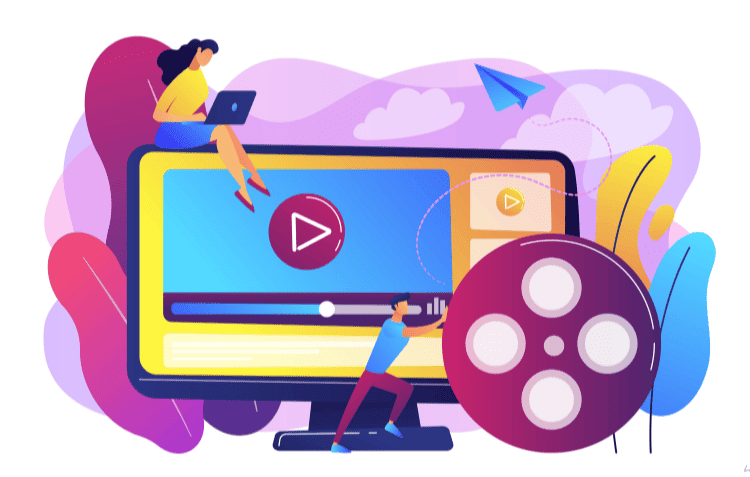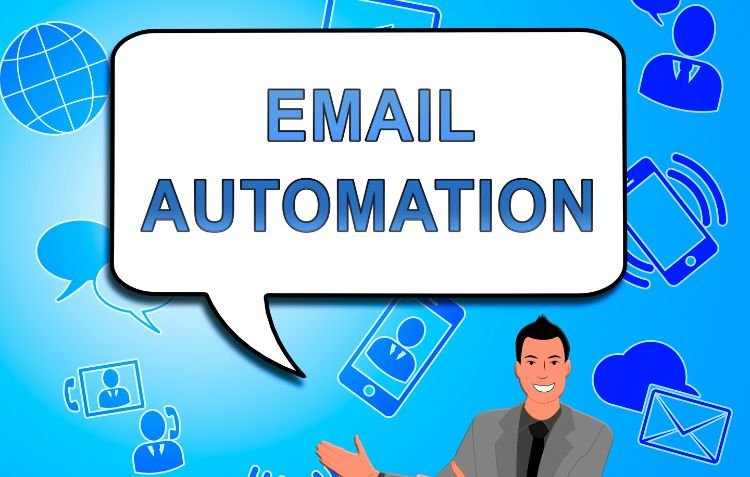Innovative Social Media Ideas for Music Academy Success
Social media has transformed the way music academies connect with students, parents, and the wider community. Whether you’re looking to attract new enrollments, showcase student achievements, or build a vibrant online presence, leveraging innovative social media ideas can set your academy apart. With over 4.8 billion social media users worldwide (Statista, 2023), platforms like Instagram, Facebook, and TikTok offer unmatched opportunities to connect with your target audience and showcase your academy’s offerings.
This article will guide you through practical and creative social media strategies tailored to music academies. From creating engaging content and collaborating with local artists to running targeted ad campaigns, these ideas will help you maximize your impact online. Ready to elevate your academy’s visibility and engagement? Keep reading to discover how these strategies can make your music academy a digital success story.
1. Understanding Your Audience
Before crafting content for your music academy, it’s essential to know who you’re speaking to. Understanding your audience helps ensure your social media efforts resonate and drive meaningful engagement.
Why Knowing Your Audience Matters
Understanding your audience is the foundation of a successful social media strategy. For music academies, this includes identifying your target groups—potential students, their parents, and local music enthusiasts. Knowing their demographics, such as age, location, and interests, helps you tailor your content and communication effectively.
Choosing the Right Platforms
Different platforms attract different audiences. Instagram appeals to younger users with visual content like videos of performances or music tutorials. TikTok thrives on short, creative clips and challenges, while Facebook is ideal for targeting parents and families with updates about programs and events. Selecting the right platform ensures your message reaches the right people.
Learning From Successful Examples
The Spivey Hall Academy at Clayton State University provides a great example. They identified key audience groups and created platform-specific content that resonated with each segment, boosting engagement and building a vibrant online community.
By researching your audience’s preferences and analyzing engagement metrics, you can create impactful social media campaigns that connect and inspire.
2. Creating Engaging Content
To stand out on social media, your content must grab attention and encourage interaction. For music academies, this means blending creativity with value to keep your audience engaged and eager for more.
Types of Engaging Content for Music Academies
1. Student Performances and Showcases
Highlighting student performances is a great way to celebrate achievements and build community pride. Share videos of recitals, practice sessions, or “before-and-after” clips showing a student’s progress. For example, an academy might post a short video of a student’s piano recital, tagging them and their family for added reach.
2. Tutorials and Quick Tips
Sharing short tutorials or music tips can establish your academy as an authority in the field. Share videos such as “How to Play the Perfect Chord Progression” or “3 Breathing Tips for Singers.” TikTok and Instagram Reels are ideal for these quick, engaging clips.
3. Behind-the-Scenes Content
Showcase your academy’s culture with behind-the-scenes content. Post videos of instructors preparing for classes, glimpses of rehearsals, or snapshots of the academy’s day-to-day activities. This humanizes your brand and fosters stronger connections.
Engagement Strategies
1. User-Generated Content (UGC)
Encourage students to share videos of their practice sessions or performances using a branded hashtag. Repost their content to show appreciation and increase engagement.
2. Interactive Posts
Polls, quizzes, and challenges encourage your audience to participate actively. For example, you could ask followers to vote on their favorite instrument or join a “7-Day Music Challenge.”
Using Data to Improve Content
Track performance metrics like likes, shares, and comments to identify what resonates with your audience. Adjust your strategy based on this data to consistently create content that engages and delights your followers.
3. Leveraging User-Generated Content

User-generated content (UGC) is a powerful way to build trust and foster community engagement for your music academy. When students, parents, or followers share their experiences, it adds authenticity to your brand and creates a sense of belonging among your audience.
Encouraging User-Generated Content
Start by creating opportunities for your audience to share their journey. For example, ask students to post videos of themselves practicing, performing, or achieving milestones using a branded hashtag like #PlayWith[AcademyName]. Offer small incentives such as recognition on your social media pages or discounts on classes to encourage participation.
Sharing and Celebrating UGC
Reposting user content not only acknowledges their effort but also provides fresh, relatable material for your platforms. Share a parent’s testimonial video or a student’s “first song” performance. For instance, Yamaha Music School frequently shares student success stories on their social channels, which fosters loyalty and inspires prospective students.
Building a Community Through UGC
By featuring UGC, you show your audience that they are valued contributors to your academy’s success. This strengthens your online community and boosts engagement. Additionally, UGC often performs well in terms of reach and interaction because it feels relatable and genuine to viewers.
4. Collaborations and Partnerships
Collaborations and partnerships are a smart way for music academies to expand their reach, gain credibility, and engage new audiences. By teaming up with local businesses, influencers, or other music-related organizations, you can create mutually beneficial opportunities to grow your brand.
Partnering with Local Businesses and Artists
Collaborate with nearby music stores, cafes, or event venues to promote your academy. For instance, you could co-host live performances at a local coffee shop, showcasing your students’ talents while the shop benefits from increased foot traffic. Partnering with local artists or bands for workshops or masterclasses can also boost your academy’s visibility while providing added value to your students.
Collaborating with Influencers
Social media influencers, especially those in the music niche, can amplify your message. Partner with micro-influencers who align with your academy’s values and target audience. For example, a local musician with a strong following could share their experience teaching a guest class at your academy, introducing your services to their audience.
Joint Events and Campaigns
Host joint events like open mic nights, music festivals, or charity drives. Use social media to promote these collaborations and tag your partners to tap into their networks, increasing reach and engagement.
5. Utilizing Paid Advertising

Paid advertising on social media platforms is an excellent way to attract new students and increase visibility for your music academy. With targeted ads, you can reach specific demographics, such as parents seeking music lessons for their children or adults wanting to learn a new instrument.
Choosing the Right Platforms
Each platform offers unique advantages for advertising. Facebook is ideal for targeting local audiences with detailed demographic filters like age, location, and interests. Instagram excels in visual storytelling, making it perfect for showcasing engaging videos of student performances or academy highlights. YouTube ads work well for longer video demonstrations, such as a student showcase or a virtual tour of your facilities.
Crafting Effective Ad Campaigns
Design ads that emotionally connect with your audience. For example, a video ad featuring a young student mastering their first song or a parent expressing pride in their child’s progress can be compelling. Use attention-grabbing visuals and clear calls-to-action (CTAs) like “Sign Up for a Free Trial Lesson Today!”
Budgeting and Measuring Success
Start with a modest budget to test which ads perform best. Use analytics tools to track metrics such as click-through rates (CTR), engagement, and conversions. Optimize your campaigns based on performance data to maximize ROI.
6. Monitoring and Analytics
Tracking the performance of your social media campaigns is essential to ensure your strategies are effective and driving the desired results. Analytics provide actionable insights into what’s working and what needs improvement, allowing you to optimize your approach for maximum impact.
Key Metrics to Track
Focus on engagement metrics like likes, comments, shares, and saves, as these indicate how well your content resonates with your audience. Track follower growth to measure the overall reach of your efforts. Conversion metrics, such as sign-ups for lessons or inquiries, help gauge the success of your campaigns in driving tangible results.
Tools for Monitoring
Use built-in analytics tools like Facebook Insights, Instagram Analytics, or third-party platforms like Hootsuite or Google Analytics. For example, Instagram’s Insights can show which types of posts generate the most engagement, helping you fine-tune your content strategy.
Continuous Improvement
Review analytics regularly to identify trends and adjust your strategies. For instance, if a post showcasing student performance has higher engagement, consider creating similar content more often. Consistent monitoring ensures you stay aligned with your goals and maintain a competitive edge.
Conclusion
Social media offers endless opportunities to elevate your music academy’s presence and success. From understanding your audience to creating engaging content, leveraging user-generated material, forming partnerships, running ads, and monitoring analytics, each strategy plays a critical role in building a thriving online brand.
By implementing these innovative ideas, your academy can foster meaningful connections with current and potential students, showcase your value, and stand out in a competitive market. Remember, authenticity and creativity are the cornerstones of a successful social media strategy. Whether it’s a heartfelt testimonial from a parent or a dynamic ad campaign, the key is to resonate with your audience and inspire them to take action.
With consistent effort and the right strategies, your music academy can achieve long-term success and become a hub for musical excellence in both the local and digital communities.
FAQs
What is the best social media to promote music?
Instagram and YouTube are top platforms for musicians, offering visual storytelling and extensive reach.
How do I advertise my music tuition?
Utilize targeted social media ads, collaborate with local businesses, and encourage satisfied students to share testimonials.
Is TikTok good for promoting music?
Yes, TikTok’s viral nature allows songs to gain rapid popularity, benefiting artists and labels.
How much do music tutors charge?
Private music lessons typically range from $30 to $100 per hour, averaging around $50 to $75.
Is music school profitable?
While many brick-and-mortar schools face profitability challenges, aiming for a 5-15% net profit margin is a reasonable goal.







